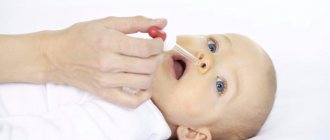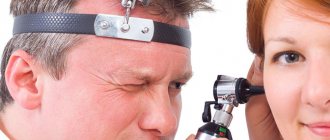How to cure a runny nose? Yandex, Google, thousands of doctors and pharmacists answer this question countless times every day. A runny nose (or rhinitis) is an inflammation of the nasal mucosa due to exposure to cold, bacteria or viruses, and the influence of allergens. The cells of the mucous membrane constantly produce secretions that protect the respiratory organs from adverse effects. When this secretion becomes too much and snot flows like a stream, we realize that we are sick and begin to look for remedies for rhinitis.
How to cure a runny nose when there is absolutely no time to get sick?
How to quickly cure a runny nose?
Which medications to use to treat a runny nose, and whether they need to be used at all, depends on what is causing the runny nose. The main causes of rhinitis:
- Cold. Under the influence of low temperatures, the small blood vessels of the nasal mucosa either narrow or expand. Contraction is necessary to reduce heat loss, and expansion is necessary to ensure the delivery of oxygen and nutrients to the cells. As a result, the mucous membrane of the nose swells, the work of the mucus-secreting glands is disrupted, breathing becomes difficult, itching and sneezing occur.
- Viruses. The virus damages the cells of the mucous membrane, which causes fluid to accumulate in the intercellular space. Swelling develops and breathing becomes difficult. Over time, the secretion thickens due to the fact that leukocytes are involved in the fight against viral infection. It is important to understand that with a viral runny nose, it is difficult to breathe not because of mucus, but because of swelling caused by the accumulation of intercellular fluid. The body copes with viruses in approximately 3 days.
- Bacteria. Most often they attack the nose at the same time as viruses. When viruses are defeated, bacteria do not even think about dying. Nasal discharge turns yellow-green and thickens even more.
- Drying of the mucous membrane. When the air in the room is too hot and dry, the mucous membrane dries out and becomes inflamed. Swelling develops, nasal congestion and runny nose appear.
- Allergy. In this case, the mucous membrane becomes inflamed due to contact with the allergen. Depending on its type, allergic rhinitis can torment a person temporarily (allergy to pollen, grass) or permanently (to household dust, pet hair, etc.).
The faster the cause of a problem is determined, the faster it can be solved. When there is absolutely no time to get sick, doctors prescribe combination medications.
Allergic rhinitis affects the ear canals and larynx
How to distinguish allergic rhinitis from viral or infectious? Allergic rhinitis is rarely accompanied by fever. If it does exist, it is low-grade (stays at 37.0° for a long time). Discharge from the nose is clear, constant, mucus constantly flows down the back of the throat. There is lacrimation, the eyes turn red, and the ears feel stuffy. Disturbances in the perception of smell and taste may occur. If a runny nose is caused by a virus or infection, the temperature, as a rule, rises to 38° and above, but lasts 1-3 days.
Types of rhinitis
Depending on the duration of the disease, rhinitis can be acute or chronic.
Based on the agent that causes rhinitis, the following types are distinguished:
- allergic;
- infectious (bacterial or viral);
- non-infectious and non-allergic.
Non-infectious rhinitis includes a large group of inflammations of the mucous membrane caused by various factors:
- typical irritants - flour, medicines, animal feathers, paints, cement, sawdust and other substances that a person deals with every day at the workplace;
- medications - vasoconstrictor drops, which are used uncontrollably and for too long, causing changes in the mucous membrane;
- hormones – occurs in pregnant women from the second trimester until childbirth;
- old age - the total amount of water decreases, nasal mucus thickens, vascular tone decreases, the mucous membrane atrophies and dries out;
- vasomotor or neurovegetative - due to excessive sensitivity of the autonomic nervous system, when vascular tone is constantly changing.
Allergic rhinitis can be year-round (due to dust, animal hair, washing powder, household chemicals) and seasonal (due to flowering plants). According to this principle, it is customary to talk about two types of rhinitis: intermittent and persistent.
Intermittent rhinitis means variable (there are periods of increased symptoms and subsidence of symptoms). An example of a classic “alternating” rhinitis is seasonal allergic, when the disease bothers you only during the flowering period, and at other times subsides.
Persistent rhinitis means constant, year-round, slowly and steadily progressing.
Please note that only a doctor who encounters different clinical situations every day can understand the type and cause of the disease and understand the nature of suffering.
Medicines for the common cold
Nasal preparations are available in the form of sprays, drops, tablets and ointments. What remedies to use for a runny nose depend on what exactly is causing it.
They say that if you treat a runny nose, it goes away in 7 days, and if you don’t treat it, then in about a week. However, in reality this is not entirely true. If the body is able to cope with “increased snotty” on its own, then recovery occurs within 2-3 days. If a runny nose lasts longer than a week, this is a reason to visit an ENT doctor. A long-term inflammatory process is the cause of sinusitis, sinusitis, and otitis media.
- Nasal sprays and drops for a runny nose are used for viral and bacterial infections. Products based on sea water are used to rinse the nasal passages and moisturize the mucous membrane for preventive purposes.
- Tablets for a runny nose are prescribed when it is necessary to achieve a systemic effect, for example, to relieve inflammation in the paranasal sinuses (Sinupret and similar drugs) or to defeat a bacterial infection (antibiotics).
- Ointments are used to fight viruses (for example, oxolinic ointment) or stimulate receptors in the skin and mucous membranes (Golden Star balm).
Many rhinitis medications come in several forms. For example, the antiviral drug Laferobion can be bought in the form of drops, sprays and even suppositories.
Diagnosis of rhinitis
The leading role in the diagnosis of rhinitis belongs to rhinoscopy, which is performed using nasal or nasopharyngeal speculum. When examining the posterior regions, local anesthesia is required to suppress the gag reflex.
The doctor's field of view includes the nasal passages, turbinates, all changes in the mucous membrane, as well as discharge, if any, are visible. In difficult or doubtful cases, a biopsy may be used, but this need is rare.
Modern diagnostics include inspection using fiber optics, which makes it possible to determine all the details of the process with absolute accuracy. Everything that is in the field of view of such optics can be photographed or recorded in order to then evaluate the dynamics of the process.
Laboratory diagnostics are mandatory to identify the cause of the disease, assess the degree of inflammation, and timely identify complications. Instrumental research methods are widely used - radiography. If necessary, smears from the mucous membrane and punctate (material obtained by puncture) are examined.
Quite often, rhinitis, especially its chronic forms, is the debut or complication of tuberculosis, endocrine diseases, autonomic dysfunction and other diseases. In this case, specialized specialists are involved who prescribe their range of diagnostic methods.
At the CELT multidisciplinary clinic, all diagnostic tests are carried out in one building - there is no need to travel anywhere or stand in queues.
How to cure a runny nose in 1 day?
Diseases, as a rule, lie in wait at moments when it is absolutely forbidden to get sick. Unfortunately, completely getting rid of a runny nose in 1 day is only possible in advertising. But correct treatment will definitely help to significantly alleviate the condition and speed up recovery. For this:
- Use antiviral medications in the nose. They contain interferons - proteins that are released by the body's cells when interacting with the virus. The higher the concentration of interferons, the faster the virus will die and viral rhinitis will stop. They need to be buried every 2-3 hours.
Anti-runny nose remedies can quickly relieve discomfort
- Take an antihistamine. If the cause of increased mucus secretion is an allergen, this will solve the problem within 24 hours.
- use bacteriophage. If there is a suspicion that bacteria are “hosting” the nose, you can drip a broad-spectrum bacteriophage (for example, Pyobacteriophage) into the nose. A runny nose may stop after the 3rd instillation. If the infection spreads further, your doctor will advise the use of antibiotics. Remember that the course of antibiotic treatment cannot be interrupted, even if the runny nose seems to have gone away.
Rinse your nose regularly with saline solutions. Salt water is the cheapest and most effective remedy for a runny nose. It dries out the nasal mucosa, making breathing easier, softens mucus and helps remove it, and washes away allergens. Even the cheapest nasal spray based on sea water or regular saline solution can cope with this task.
But traditional medicine recipes should be treated with caution. Dropping onion juice into the nose can cause burns to the mucous membrane and impair the sense of smell. Rinsing the nose with medicinal herbs (sage, chamomile, calendula) can cause an allergic reaction. Warming the nose and paranasal sinuses can increase inflammation and lead to the formation of pus. With sinusitis, this is generally unacceptable.
How to cure chronic runny nose?
To determine the cause of a chronic runny nose, you need to do:
- rhinoscopy, x-ray or tomography of the paranasal sinuses - this will help to find out whether there is pus in them and where it is localized;
- general and biochemical blood tests, general urine analysis;
- allergy tests, studies on the levels of immunoglobulins in the blood;
- bacterial cultures from the nose, nasopharynx, and tonsils.
After the doctor finds out the cause of the runny nose, he prescribes antibacterial or antihistamines, explains how to cleanse your nose in your case, and recommends physiotherapy.
Medicines for prolonged rhinitis are selected after a thorough examination
Our services in otorhinolaryngology
The administration of CELT JSC regularly updates the price list posted on the clinic’s website. However, in order to avoid possible misunderstandings, we ask you to clarify the cost of services by phone: +7
| Service name | Price in rubles |
| Submucosal vasotomy of the inferior nasal turbinates | 60 000 — 90 000 |
| Radio wave thermal reduction of the inferior turbinates | 16 000 |
| X-ray of the paranasal sinuses | 2 200 |
| Endoscopic rhinoscopy | 1 500 |
All services
Make an appointment through the application or by calling +7 +7 We work every day:
- Monday—Friday: 8.00—20.00
- Saturday: 8.00–18.00
- Sunday is a day off
The nearest metro and MCC stations to the clinic:
- Highway of Enthusiasts or Perovo
- Partisan
- Enthusiast Highway
Driving directions
How to cure allergic rhinitis?
Combating allergic rhinitis requires not only the use of nasal decongestants, but also lifestyle changes. The main rule is to completely eliminate the influence of the allergen on the body or reduce contact with it to a minimum. To do this you need:
- if you are allergic to pollen or grass, go outside as little as possible and visit green areas, especially when plants are in flowering;
- at the peak time for the concentration of allergens in the air, cover open windows with damp gauze and periodically renew it;
- wear glasses, gloves, closed clothing;
- frequently rinse your nose with saline solutions and rinse your mouth;
- after each walk, take a shower and put on new clothes;
- do wet cleaning as often as possible;
- purify the air with filters;
- dry washed items indoors and not on the balcony;
- exclude the most allergenic foods from the diet: nuts, strawberries, tomatoes, honey, eggs, seafood, chocolate, citrus fruits, certain types of fish.
The most reliable remedy for allergic rhinitis is to eliminate the allergen
Medications against runny nose caused by allergens:
- Antihistamines. They can be used as nasal sprays, drops or tablets. Sprays have minimal side effects. Drops and tablets systemically block the allergic reaction.
- Glucocorticoids. For allergies, these substances are applied topically to eliminate inflammation. They are prescribed in combination with antihistamines and even in cases where they are ineffective. Modern glucocorticoids (for example, drugs with the active ingredient mometasone furoate Nasonex sinus, Flix) can be used for a long time without fear of developing addiction.
If you have passed a lot of tests, and doctors still do not understand how to cure your persistent runny nose, consult a gastroenterologist. Perhaps the swelling of the mucous membrane is caused by malfunctions of the digestive system.
Please note: when your nose is stuffy, you should not:
- draw mucus in and swallow it. It contains viruses, bacteria, inflammatory products that should be removed from the body, and not “run further”;
- Prevent sneezing by pinching your nose. If a reflex sneeze cannot be avoided, mucus will go into the ears, and otitis will be added to the runny nose;
- use cloth handkerchiefs. It is better to use soft disposable paper napkins and wash your hands and face after blowing your nose.
Use disposable handkerchiefs - they are hygienic
How to cure a runny nose in a child?
A child's runny nose should never be left to chance. Due to age-related anatomical features, the Eustachian tube (the canal that connects the middle ear to the pharynx) is shorter and wider in children than in adults. Therefore, infection penetrates into it more easily, which is fraught with otitis media.
Therefore, the main task of parents at this moment is to remove swelling, which interferes with ventilation of the middle ear cavity and significantly increases the likelihood of developing an inflammatory process. For this purpose, rinsing with water-salt solutions is used, and in more complex cases, vasoconstrictor drops. When a runny nose not only does not go away, but the nasal discharge turns yellow-green, doctors have to prescribe bacteriophages or antibiotics to their young patients to fight the bacterial infection.
Decongestants for the nose significantly alleviate the baby’s condition
Vasoconstrictor drugs for children for the common cold should definitely be used in the following cases:
- Earache. Vasoconstrictor drops act not only in the nose, but also in the auditory tube. They are able to get there in the same way that mucus gets there. Therefore, if you start using vasoconstrictor drugs in a timely manner, there is a chance to prevent otitis media. For children who are predisposed to otitis media, it is better to use nasal drops rather than sprays. Dropped medication is more likely to penetrate the ear canal than sprayed medication.
- No nasal breathing. When a child breathes through the mouth, the mucus in the airways quickly dries out. The result is bronchitis or pneumonia. Therefore, you need to do everything to ensure that the child breathes through his nose, especially during sleep.
- Breathing problems. This is observed in croup, asthma, and an allergic attack, when the mucous membranes of the larynx and nose swell very much. In this case, the drugs need to be dripped into both the nose and mouth. Delay is life-threatening. If your child has already had similar attacks, always keep at least the most inexpensive vasoconstrictor spray for a runny nose on hand.
- High fever and difficulty breathing. At high temperatures, the body releases excess heat during breathing. The child begins to breathe more often. When the nasal mucosa is swollen, it becomes difficult to breathe, and the airways quickly dry out. To prevent this from happening and to prevent complications from developing, you need to restore nasal breathing.
Medicines for children for runny nose quickly restore breathing
You should not abuse vasoconstrictor drugs. The maximum duration of their use is 5–7 days. With prolonged use, the nasal mucosa begins to dry out, sensitivity to the active substance is lost, and drug-induced rhinitis may develop. In addition, such drugs should be alternated depending on the active substance. For example, if last time you used a drug with oxymetazoline (for example, Rinazolin or Nazivin), then next time it is better to use a drug with naphazoline (for example, Naphthyzin). Children are often prescribed combination drugs that have both vasoconstrictor and antiallergic effects (Vibrocil, Milt). Therefore, if washing with saline solutions helps (by the way, these are the most inexpensive remedies for a runny nose), there is no need to switch to “heavier artillery”.
The nasal passages in children are significantly narrower than in adults, so a “children’s” runny nose lasts on average longer than an “adult” one - about 10 days.
So, the basic rules in the fight against a runny nose are the correct identification of the cause that caused it, restoration of nasal breathing and careful adherence to the doctor’s recommendations. Be healthy!








